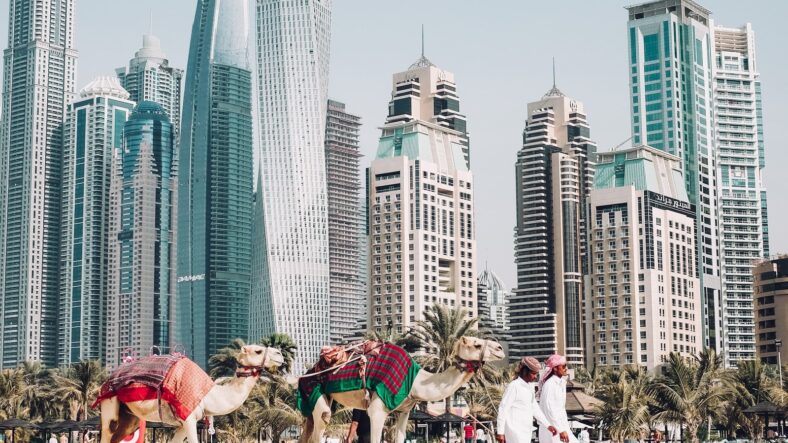North Africa is customarily said to be comprised of eight nations: Egypt and Sudan, through Libya, Tunisia and Algeria to Morocco, Western Sahara and Mali in the west. Verifiably, it was comprised of the zones of the Maghreb in the west and the Nile Valley, that have been controlled and battled about by Phoenicians, Egyptians, Romans, Islamic Caliphates, Footrest Sultans, and French and Spanish pilgrims. We look at the 12 generally amazing, entrancing authentic goals right now of the world. If you want to book your at check price then you can choose Spirit airlines customer service number.

The Old Towns of Djenné | Mali
The Old Towns of Djenné in focal Mali were previously a key stop for the vendors taking slaves, salt and gold over the Sahara to the medinas of Morocco. The adobe structures are produced using mud blocks heated hard in the sun and organized around extraordinary log platforms and palm fronds that stick away from the dividers. UNESCO portrays the Old Towns as making up one of the most lovely urban communities in Africa, with the Djenné-Djeno region going back to around 200 BC. In the fifteenth and sixteenth hundreds of years the territory was popular for its madrassas and Islamic grant – the Incomparable Mosque worked in 1906 is the incredible focal point of the Towns.

Leptis Magna | Libya
Leptis Magna toward the east of Tripoli on the Mediterranean coast is a standout amongst other saved of every Roman city. Initially, it was a Berber settlement, at that point held by the Carthaginians before tumbling to Rome following the Punic Wars. Toward the finish of the second century Promotion its riches developed when the local Septimus Severus became sovereign. He showered riches and structures on Leptis Magna, including the gathering, basilica, theater and amphitheater that stand today and the curve of Septimus Severus. From that point, lions were sent to act in the Colosseum in Rome.
Siwa Desert spring | Egypt
Somewhere down in the Egyptian desert lies the desert spring of Siwa, a position of date palms and olive forests. So disengaged is Siwa that over centuries it built up its own way of life that incorporated a language got from Berber and the broad act of same-sex marriage, while Islam was dismissed for a long time. The historical backdrop of Siwa starts in the tenth thousand years BC before it was settled by Egyptians and a sanctuary for the prophet of Amun was set up, the last visited by Alexander the Incomparable. Its vestiges despite everything stand alongside those of the antiquated post of Siwa, the Shalil. In the Subsequent Universal War, it was utilized as a base for English Uncommon Powers.
Essaouira, on the Atlantic shoreline of Morocco, has been a fundamental exchanging post since the Carthaginian period, battled about and protected by French, Portuguese and Moroccan powers. In the sixteenth century the Portuguese set up the brief fortification of Castelo Genuine de Mogador at Essaouira, just to be constrained away by the Moroccans. The cutting edge walled city was worked during the 1760s by Sultan Mohammed III of Morocco utilizing European designers including a secretive British bloke named Ahmed el Inglezi. Fortifications and defenses take off above souks and luxurious structures utilized in the nineteenth century by English, Dutch, and Spanish ambassadors who came to arrange exchanging concessions.
Karnak | Egypt
In spite of the Pyramids being the notorious picture, the Karnak sanctuary complex at Luxor is presumably the most marvelous site of old Egypt. Karnak was added to by more than 30 Pharaohs from 18 lines over a period traversing from the earliest starting point of the Center Realm up until the Ptolemaic time and the Roman triumph of Egypt, a timespan of well more than 1000 years. The remaining parts of sanctuaries and arches, colossal segments and frescoes engraved with pictographs, and monoliths and statues of divine beings Pharaohs despite everything remain, including the well known region committed to Amun-Re.
The Cavern of the Swimmers | Libya
The Cavern of the Swimmers remains in the Gilf Kebir level several miles into the Libyan Desert, a zone not found via cartographers until 1926. You may have known about it through The English Patient. In 1933, a lot of petroglyphs, or cavern works of art, dating to the Neolithic period were found, delineating men and creatures swimming. Today, there have been innumerable different petroglyphs found in the Sahara, however the Cavern of the Swimmers are maybe the most remarkable. They propose the profoundly unfriendly desert was once mild and watered, a spot where creatures could be kept and plants developed.
El Djem | Tunisia
The modest community of El Djem in Tunisia was at one time the Roman city of Thysdrus, the vast majority of which currently lies covered by the desert sands. What despite everything stands is the extraordinary amphitheater, when the site of gladiatorial challenges and chariot races. It was the biggest of its sort in the Roman Domain, littler just than the amphitheater at Capua and the Colosseum at Rome. Students of history accept that around 35,000 observers could be situated inside. Today the field, the entries where were kept the wild mammoths and the battling men, and the three degrees of the Corinthian façade stay flawless.
The Mosques of Cairo | Egypt
Most guests head to Cairo for the galleries committed to the time of the Pharaohs and pass up the great Islamic engineering encompassing them. Cairo is at times known as the ‘City of a Thousand Minarets’, so stuffed is it with mosques, kasbahs, and madrassas. Two locales specifically merit looking at. The Mosque of Ibn Tulun is the most seasoned and biggest in the city, worked by the Legislative head of Egypt, Ibn Tulun during the 870s. The minaret has a phenomenal external staircase displayed on that of the Incomparable Mosque of Samarra in Iraq. The other site, the Al-Azhar Mosque, was established in 970 and has worked as a seat of adapting from that point forward, with the incredible library of Cairo inside.
Oran | Algeria
On the Mediterranean shoreline of Algeria, Oran has been a spot battled about by French, Spanish, Fields and Turks for many years. Established by the Fields of Andalusia in the tenth century, the port went to and fro among Spanish and Stool hands before it was taken by the French in the attack of Algeria in 1831. All the more as of late, in the Algerian War or Freedom of the 1950s it was the site of slaughters of French pilgrims. The heritage of the different intruders and settlers is a townscape where pretentious French extravagant structures of the Subsequent Realm stand one next to the other with the old medina quarter, while the Spanish port of Santa Clause Cruz disregards the entire city from the slants above.
The Medina of Marrakech | Morocco
There are medinas and souks across North Africa and in Morocco particularly, at Fes and Tangiers and numerous different towns. In any case, the medina at Marrakech is perhaps the best case of a medieval Islamic sustained site despite everything remaining in something near its unique structure. An UNESCO World Legacy Site, the medina of made up of a labyrinth of back streets, souks, mosques, royal residences and nurseries. You can also book your flight ticket with. It was generally worked by the Almoravid line somewhere in the range of 1070 and 1072, leaders of a great part of the Maghreb and Andalusia, and filled in as the capital of the Almohad Caliphate. Its features incorporate the bulwarks and colossal entryways, the incredible market square and the Koutoubia Mosque.






